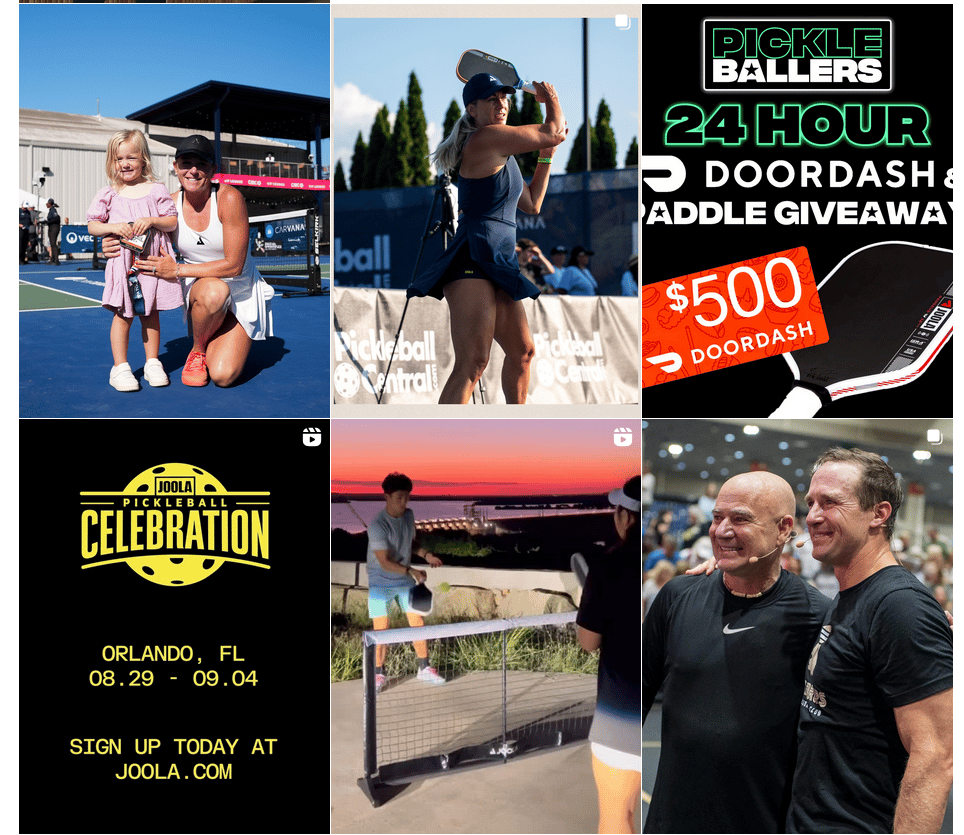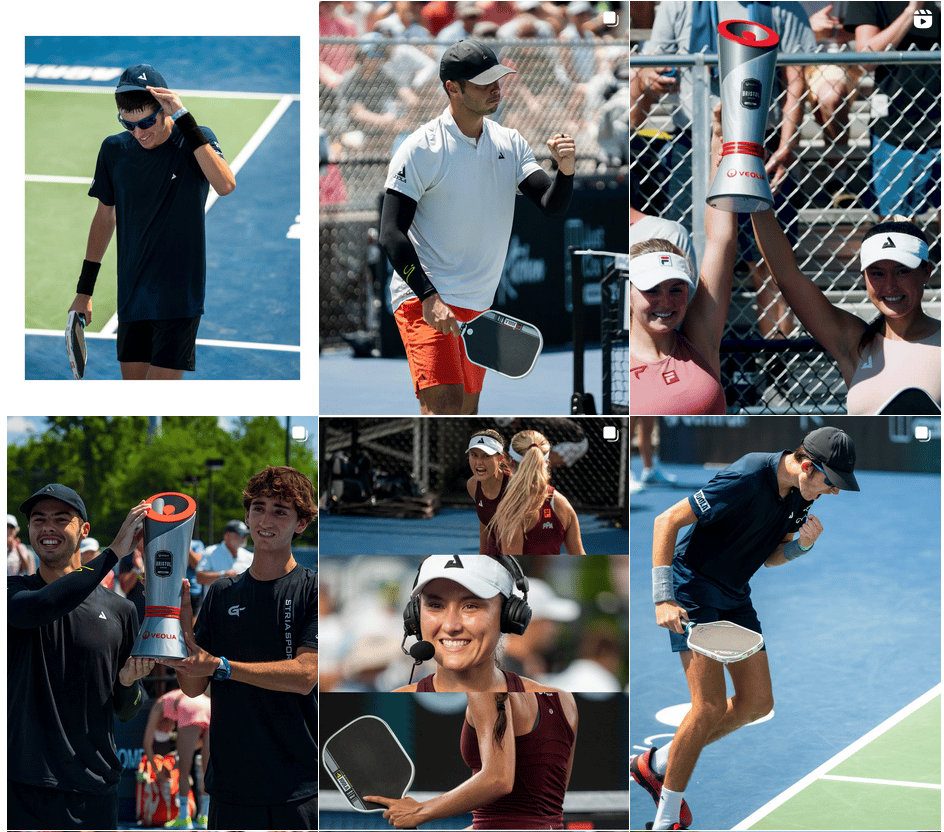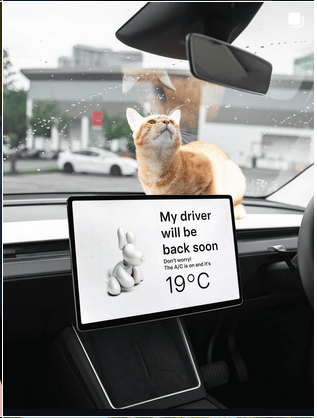- Building Pickleball Newsletter
- Posts
- You can be successful without having fun
You can be successful without having fun
Working with brands, Brands social pages lacking purpose, Designing your environment, Living in the Arena
“No, I’m not sponsored by Selkirk.” as I answered instantly over the phone.
My goal whenever I have the opportunity to work with a brand is to maximize the opportunity. It has and will always look different.
When I take on a project, I deliver—quality, aesthetic, intention, and focused. But I’m still refining how to balance creative output with what brands actually expect. What does enough even look like? One video? Two Reels? What’s the alternative—going all in every time? When brands reach out to me or people have asked in the past, where do you start? It depends on the brand’s goals at the time. Most of the ones I work with now treat views and sales as the primary metric of success. The content I create isn’t just to push product; it’s meant to document a moment, an experience. And if I choose to review something, it’s because I believe in it enough to step outside the bounds of what we originally agreed upon.
I’m not sponsored by Selkirk or any other brand for that matter. We (brands and I) occasionally work together on projects. What’s funny is this is what I wanted to do for companies years ago. “Strategy”. Scouring the job boards at Nike, Apple, Netflix, and Tesla. Of course I didn’t know a version of it could look like what I’m doing now.
It’s 2025, and we’re still seeing brand feeds full of static studio shots. A perfectly lit product on a white background. Pretty… but empty.
No story. No reason to stop scrolling. No insight into who you are or why you exist.
That’s not branding. That’s a catalog. And a catalog without context is just noise.
If your content doesn’t make someone pause, connect, or care, it’s not content — it’s what I call ‘scroll trash.’
A brand is built through meaning, not megapixels. Show me the “why,” not just the “what.”
Look at JOOLA. Ever since they hired a media team to film and curate their content, they stopped posting static product photos. They post what they want people to feel when they see JOOLA. They post what they want to be known as.


The culture they’re trying to create. They post pros, celebrity figures, sponsored players, employees, juniors, community, events, moments. They let the product speak for itself. They don’t need to convince you it’s good. Look at their pros and the results. Look at all the celebrities/influential figures using it, like Andre Agassi.
Tesla. They focus on relatability and solving relatable driver problems.


They post features of their products that either teach, inspire, or entertain. They highlight the features and how it could impact the driver/owners life.
With that being said, after working with brands since the beginning of the year, I lost sight of having fun and creating for myself. I chased metrics and became obsessed with performance (somewhat out of my control) instead of rewarding or measuring myself on things like consistency or enjoyment (things I can control). And that’s why I say you can be successful without having fun. I had forgotten why I started all of this in the first place. This isn’t a complaint but rather a cautionary tale. Don’t lose the very thing that people sought you out for.
Quantity vs Quality
So I’ve been experimenting with the iPhone and the different ways one can leverage it to create content more efficiently and effectively. Filming in vertical (learning vertical composition), using Instagram’s native app (head of IG Adam Mosseri stated using native IG editing app Edits will help reach), etc. And because I’m in a perpetual state of experimenting and learning, the priorities can shift. Earlier in the year I prioritized understanding filmmaking, videography, “cinematography”, etc. Not that the iPhone is incapable or excluded to this. What I found was the iPhone was largely more efficient because I worried less about all the “cinematic” efforts like lighting, composition, vertical v horizontal, SLOG, white balance, etc. and rather giving precedence to the pre-production and the ideas. And you can just pull your phone out and immediately start recording without worrying about the settings.
And this reminded me of the time my coach Greg Souders used to say–”what’s effective isn’t always efficient, and what’s efficient isn’t always effective.” I’m still exploring the various use cases for each.
The goal with this experimenting is to have accumulated various skills while honing my taste and style. And then, I’ll do it all over again.
Because adaptation is growth.
Designing your environment through necessity.
I’m realizing more and more that most of what we do stems from necessity. What I mean is that once you realize that, you can design your environment to signal the circumstances or desires and goals to fulfill that necessity.
“If you want something done, ask a busy person.”
My interpretation is: how do you become efficient and resourceful? Take on more responsibilities.
We start exercising because of a health scare from our doctor, or we signed ourselves up for a marathon, a fitness event.
We design our life to fit our financial circumstances. Where we live, the job we take, etc.
We move to new cities to take on new jobs, start a new life, meet new people, or move closer to family.
Why were solar panels created? Alternative energy source that reduced our dependence on fossil fuels.
As content creators we hire out due to burnout, efficiency, etc.
If all you have is an iPhone to rely on for content, it’ll lead to some pretty creative approaches.
Design your pursuits with constraints and you’ll narrow down very quickly what can be kept or discarded.
Life is lived in the Arena (by Naval Ravikant)
“Life is lived in the arena. You only learn by doing. And if you’re not doing, then all the learning you’re picking up is too general and too abstract. Then it truly is Hallmark aphorisms. You don’t know what applies where and when…” Read the rest here
Thanks for reading.
Brian